Estimated reading time: 5 minutes
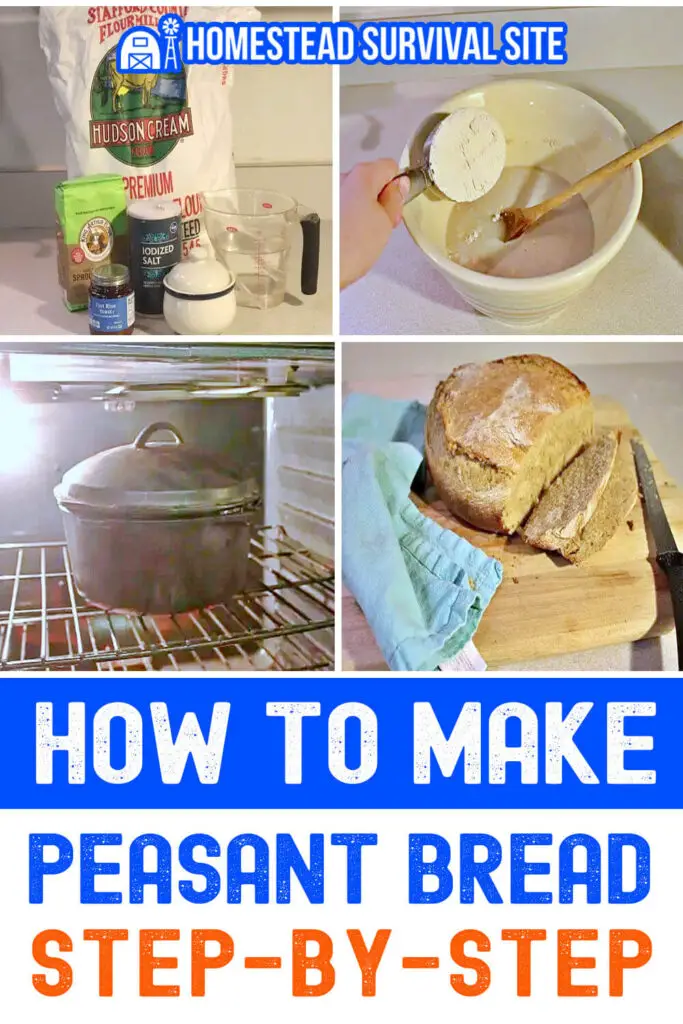
If you're new to from-scratch cooking or bread-making in particular, peasant bread is a great place to start. It’s long been a cheap family staple and is an easy recipe to add to or alter to suit your tastes. Plus, it’s no-knead!
While there isn’t a strict definition for peasant bread, traditionally the basis was simply flour, water, yeast, and salt. The flour would’ve been whole wheat or rye depending upon the region. Many people would’ve made additions to this recipe such as seeds, nuts, seasonings, or dried fruit depending on their local and seasonal availability.
This is a basic recipe, so feel free to add spices or other ingredients.
Want to save this post for later? Click Here to Pin It On Pinterest!
What you’ll need:
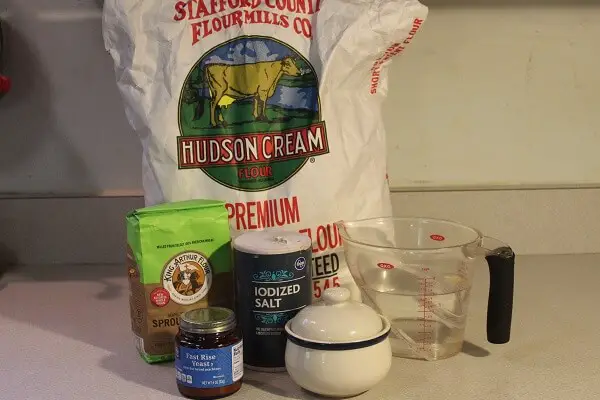
- 1 good sized dutch oven
- 3 cups warm water
- 2 TBS sugar
- 1 TBS active dry yeast
- 1 1/2 tsp salt
- 3 cups wheat flour
- 2 1/2 cups all-purpose flour
Note: Different ratios or types of flour may be substituted, i.e. sprouted wheat versus whole wheat or less all-purpose flour and more wheat flour. Keep in mind white flour is lighter and the higher the percentage of white flour the lighter and airier the loaf will be.
To begin, combine the water, yeast, and sugar in a large bowl. The sugar isn’t for flavoring, it feeds the yeast ensuring that your bread will rise well. Then add the salt and begin adding the wheat flour one cup at a time.
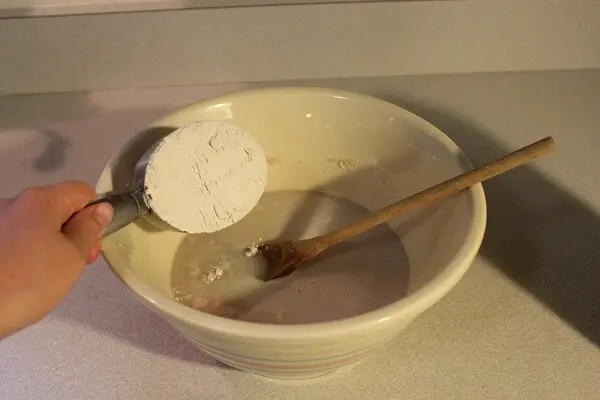
After you’ve added the 3 cups of wheat flour, the dough should begin coming together and be harder to stir.
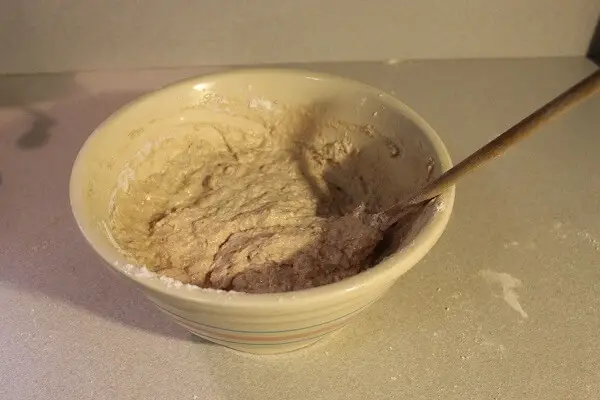
Then you can begin adding the all purpose flour 1/2 cup at a time. The exact amount may vary some. Stop adding flour when your dough has formed a ball. Unlike normal bread dough, it can still be a bit sticky. Stirring in the last bit of flour may be tough so you might choose to use your hands instead.
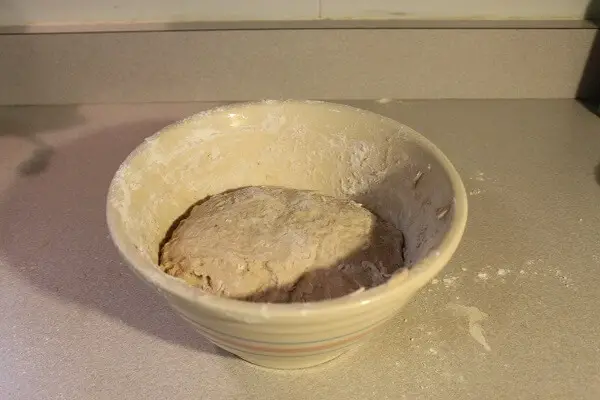
Leave the dough in the bowl and let it rise, covered with a damp cloth or towel until about doubled in size. This can take anywhere from 1-4 hours depending on your kitchen’s temperature. If your bread isn’t rising well because your kitchen is too cool, you can use your oven to help. Preheat your oven to the lowest possible temperature and place the covered bowl of dough inside and leave the oven door slightly open.
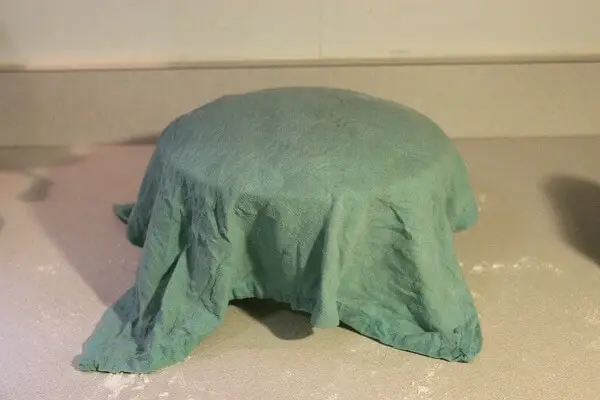
After the dough has risen, preheat your oven and a well oiled, covered dutch oven to 450°F. Let the dutch oven heat up at temperature for about 20 minutes.
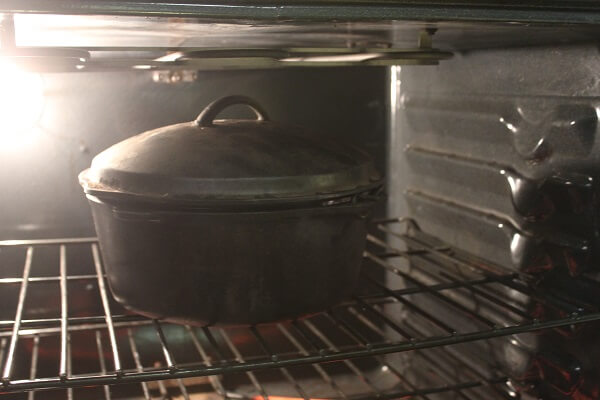
Place the dough into the hot dutch oven and bake covered for 30 minutes. The finished loaf should be golden brown on top. If you’d like a crunchier crust, you can leave it in the oven for a few additional minutes with the lid off.
Then enjoy!
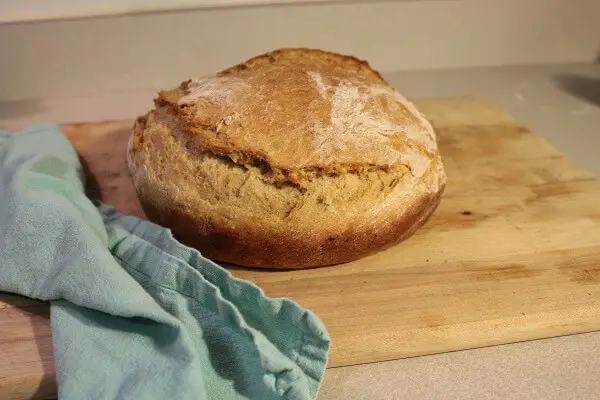
This delicious bread is simple to make and looks great, a perfect way to show off your awesome cooking skills to family and friends. Be sure to try it out with seasonal, homestead ingredients like garden fresh herbs!

Like this post? Don't Forget to Pin It On Pinterest!
You May Also Like:

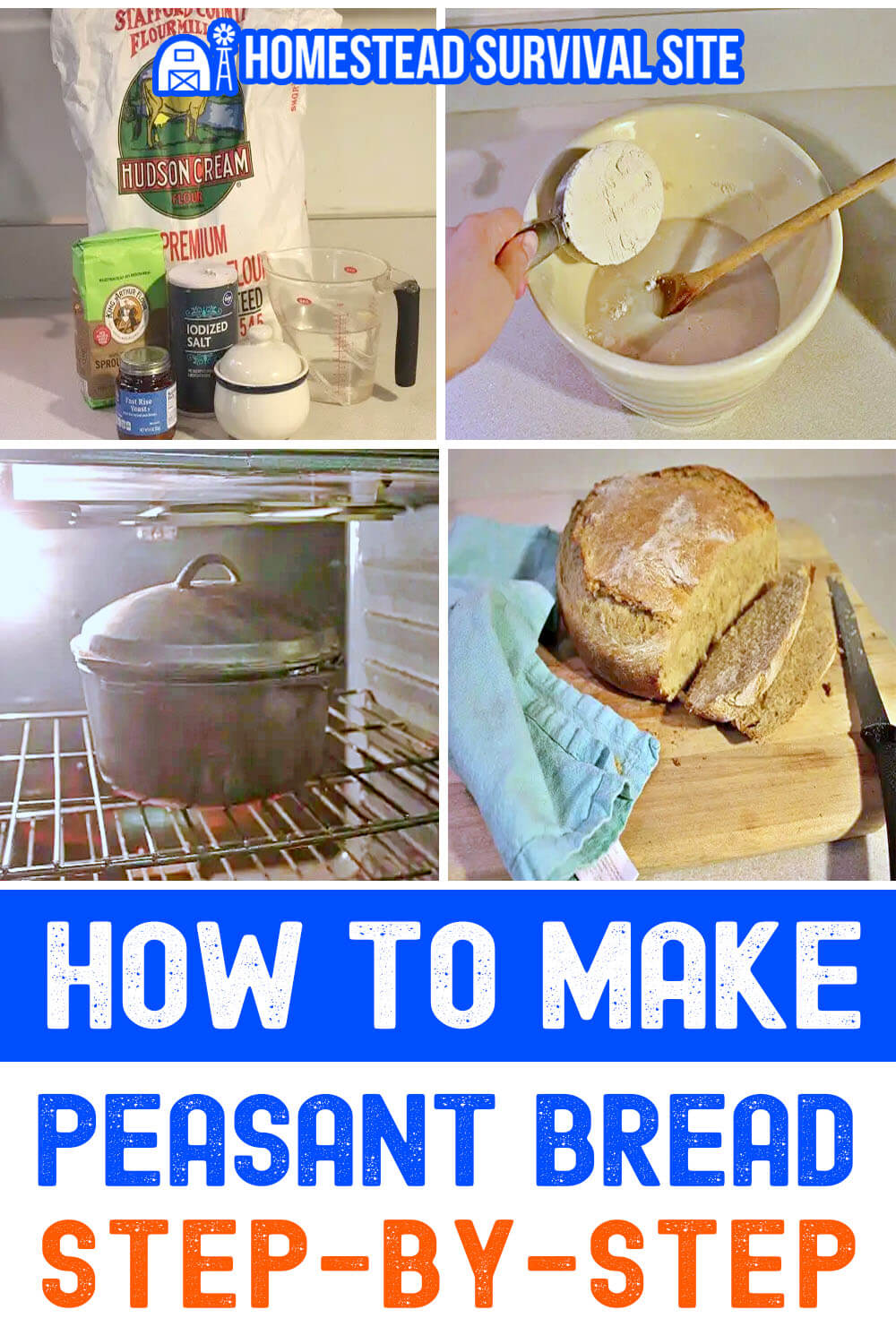





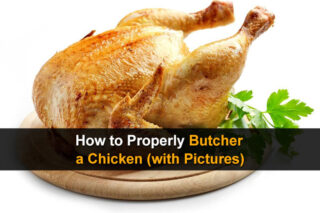


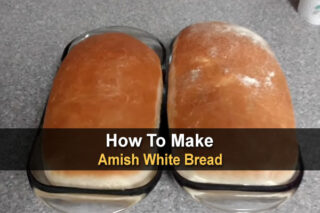


What, exactly, makes this “peasant bread”?
Is it the fact that it is baked in a pot instead of a bread pan?
Actually, I’m not sure where the term originates from–possibly somewhere in Europe–but it generally refers to bread that is very simple to make. http://www.wisegeek.com/what-is-peasant-bread.htm
Only the wealthy could afford processed flour. The peasant class could only afford rye or poorly refined wheat flour, thus the whole wheat component.
5 cups of white flour? all purpose
Is there some other pot the bread can be baked in? I don’t have a Dutch oven. Thanks for the feedback,
I made with pictures, it ended tasting like paper
I made this and cooked it in my dutch over over a fire outside to practice for the SCA camping trip we will be going on later in the year. It was fantastic. I think it needs to be punched down after the first rise and let it rise again so you get an even crumb. I actually had to split it in half to get it to fit in the pot. So, I have 2 loaves. I am probably going to put raisins and cinnamon on the next one for a morning bread.
Cinnamon and rasins sounds good. I like currants. I love the flavor of a bit if honey with whole wheat. I’d bet adding rye would be tasty as well. I have 50 lb bags of grain. Grinding some to add to the bread to change it up may be my next project. There are wheat, oats, millet, corn, and rolled rye. Soaking whole grain and waiting till it’s just begining to sprout and incorporating that into the dough is favorful also.
This was amazing! My family absolutely loved it. Gave some to the boys this morning for their hunting trip.
My wife makes four-ingredient bread once a week or so (goes great with the soups I make). AP flour, water, yeast, and a little salt. An 8 hour rise, then a punchdown, then into a pre-heated dutch oven (covered) at 450 for 30 or 40 minutes.
Why the dutch oven? It retains the moisture so the top of the bread doesn’t dry out. After all, the oven is set to 450.
I’ve also made pita (flatbread from the middle east). That uses six ingredients… the ones above plus a little sugar and yogurt.